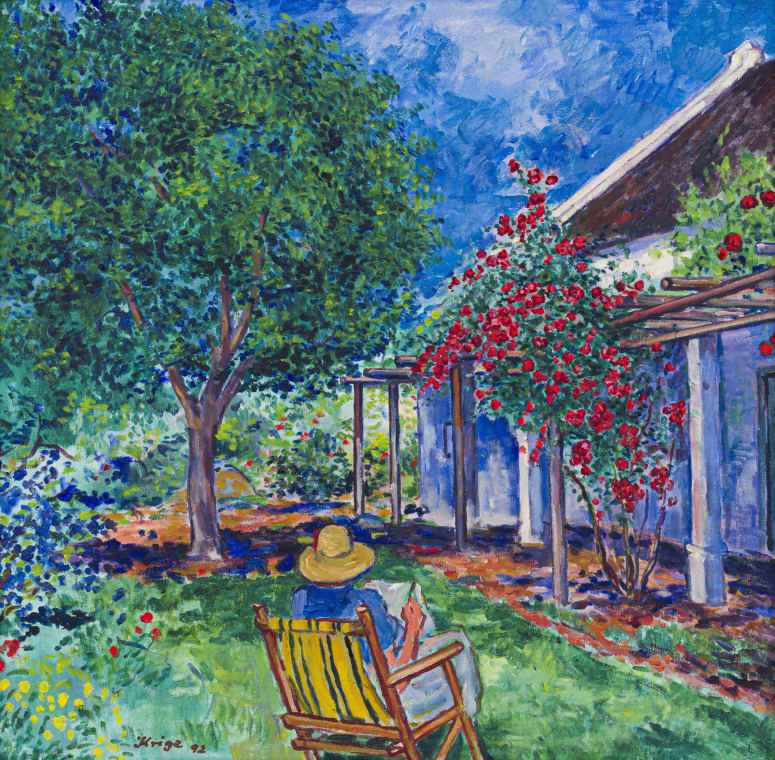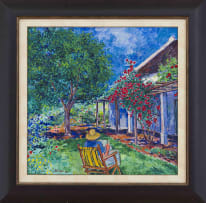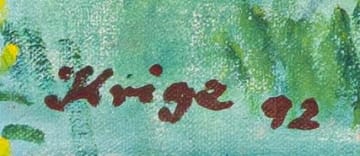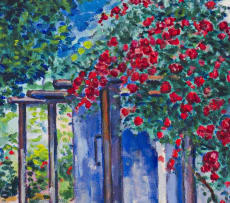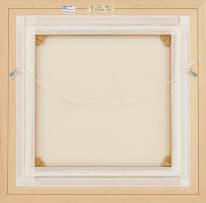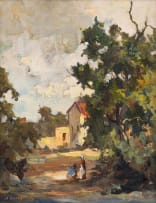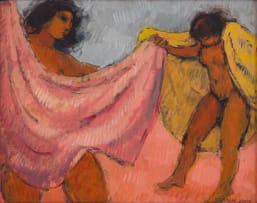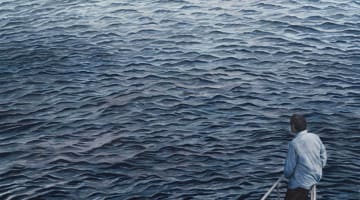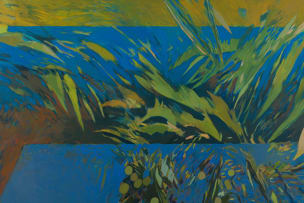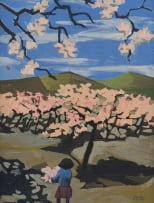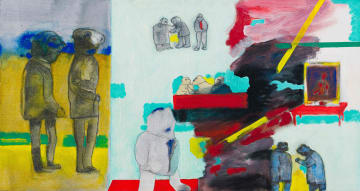Johannesburg Auction Week
Live Virtual Auction, 16 - 17 May 2022
Day Sale
Incl. Buyer's Premium & VAT
About this Item
signed and dated 92
Notes
François Krige was born in 1913 in Uniondale, Western Cape, the fourth son in a distinguished Afrikaans family that had lived in South African for more than ten generations. In 1927 he enrolled at the Michaelis School of Fine Art at the University of Cape Town, and in 1934 he visited England briefly before joining his brother Uys (the poet Uys Krige) in Spain, where he continued his art studies under Daniel Vázquez Díaz at the Escuela de Bellas Artes de San Fernando in Madrid. Krige travelled widely on the continent, only returning to South African in 1937 where, along with Terence McCaw, Alexis Preller, Walter Battiss, Gregoire Boonzaier, Freida Lock and Lippy Lipschitz, he became a member of the New Group, which represented the creative avantgarde of the time. During WWII, he joined the Union Defence Force and served in North Africa - Libya, Egypt and Syria - as well as in Italy, as an Official War Artist. After coming home in 1944, Krige travelled widely, in South Africa, Botswana, Namibia and Lesotho, studying the landscape and the traditional ways of life of West Coast fishermen, and the Southern San, an interest shared with Walter Battiss.
While Krige did not adhere to any particular stylistic movement, the influence of European and South African impressionism, postimpressionism and expressionism can be seen throughout his oeuvre. The influence of Gauguin is perhaps uppermost in a work such as lot 14, Study of Leucadendrons, and Matisse in lot 15, Reclining Nude.
In 1967, Krige and his new wife, Sylvia, settled in Montagu, for a simpler lifestyle away from the hubbub of the city. The new environment suited the artist well, providing privacy and the peace to paint. The couple's garden and vegetable patch became a new passion and provided key inspiration and subject matter in his later works. Lot 13 depicts the artist's wife reading in their luxuriant garden, with a view of the artist's studio to the side. Krige lived out his final years in this beloved home and died in 1994. During his lifetime, he rarely exhibited his works and they were seldom seen by the public, but after his death, the family converted his home into a gallery, with works on permanent display.
Krige's life and work spanned a critical time in South African art, when the parochial local scene shifted and aligned itself more closely with international trends. Although it took a while, as Stefan Hundt indicates, 'Krige's contribution is at last being recognised outside the critical light of contemporary practice and will remain an important part of the evolution of South African art history.'1
1.Stefan Hundt (2000) 'An Appraisal', in Justin Fox, The Life and Art of François Krige, Cape Town: Fernwood, page 136.
